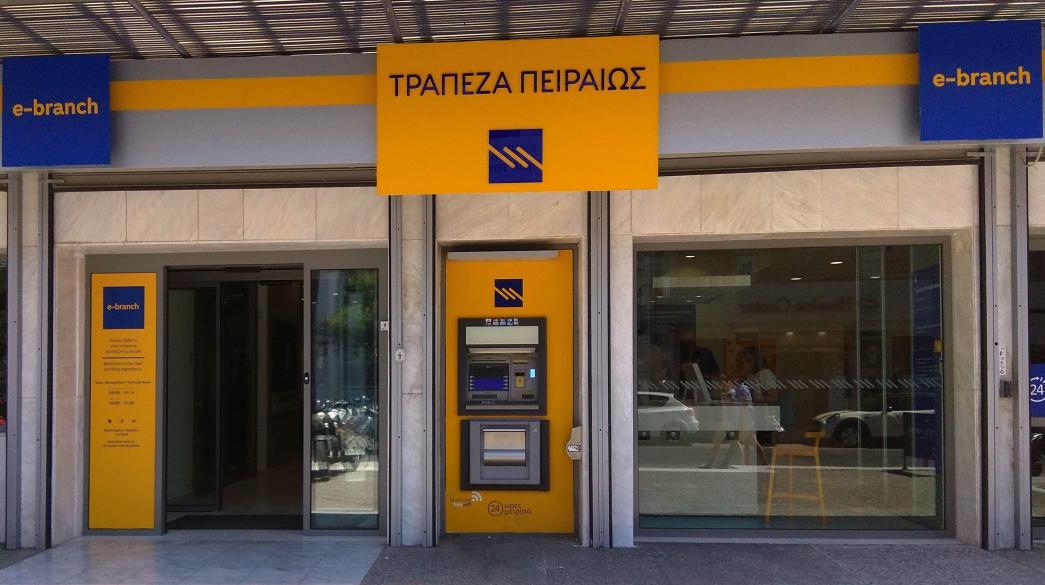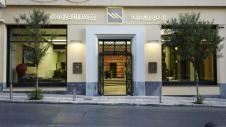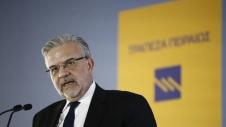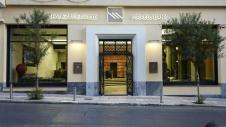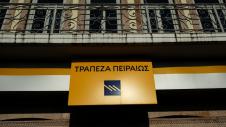Without covering his identity behind companies or investment schemes and without keeping his participation rate below the 5 percent mandatory notification limit, billionaire Aristotelis Mystakidis officially became yesterday one of Piraeus Bank's major shareholders, showing in practice his confidence in the national economy and the country's largest bank.
Beyond the acquisition of a 5.14 percent stake in Piraeus Bank, market participants emphasize the way in which this investment move was made: "Telis", as Mystakidis is known in international business circles, moved methodically and discretely, picking up shares from the market, in order to make his appearance among the bank's shareholder in a clear manner, ie as an individual who notifies the Stock Exchange that he has become a shareholder with a stake of more than 5 percent.
"He didn't just invest, he wanted it to be known that he has invested," say market sources.
This confirms, in a way, that the billionaire who a few years ago controlled the global copper market, and was known as the "king of copper", does not just intend to make a speculative move, buying now that the bank's valuation is low in order to sell a little later at a higher price, but intends to keep this investment on a long-term basis and possibly increase it.
After all, the investment is small by Mystakidis' standards. Based on yesterday's market capitalization of Piraeus Bank, the percentage acquired is worth about 31 million euros, less than his luxury home in Halkidiki, or the 80 million euro apartment he bought in London a few years ago.
Based on the Forbes billionaire list, Mystakidis had $1.1 billion in assets in April 2020, down from $2.1 billion a year earlier as the capitalization of Glencore had fallen sigificantly - a company in which he holds more than 3 percent, despite the fact that since the end of 2018 he has withdrawn from management duties.
It is certain that the publication of Mystakidis' participation in Piraeus Bank sends a clear message to the market: a large-caliber investor, among the thousand richest in the world, based on the Forbes list, seems convinced that the Greek economy will overcome the crisis and recover, that the banking system will get through it and that, in particular, the management of Piraeus Bank will be able to successfully implement its ambitious plan to reduce non-performing loans, creating value for shareholders.
This vote of confidence is even more important, because the 58-year-old Mystakidis has already had a bad experience from investing in a Greek bank and everything shows that he weighed his investment decisions very carefully. In 2013, when he was still part of Glencore's management team, at a time when there was interest in the state-owned nickel industry, LARCO, the billionaire had shown confidence in the plans of the Samaras government, participating in National Bank's share capital increase. That investment turned out to take place at a bad time and Mystakidis, like all those who had backed Greek banks at the time, took heavy losses.
After leaving Glencore in late 2018, many expected that the Greek billionaire, the third richest Greek on the "Forbes" list for 2019 after Spiros Latsis and Phillip Niarchos, would make some significant investment moves in his country of origin and, in particular, many speculated that it would be in renewable energy, real estate, or tourism. However, he chose a "difficult" sector, which has entered a new cycle of uncertainty due to the coronavirus crisis: banking.
And perhaps this shows how an investor of his magnitude sees Greece: big investment opportunities are not where there are obvious prospects, but where there is great uncertainty, valuations are very low and few investors are ready to take the risk of a large position.
NONTAS CHALDOUPIS


